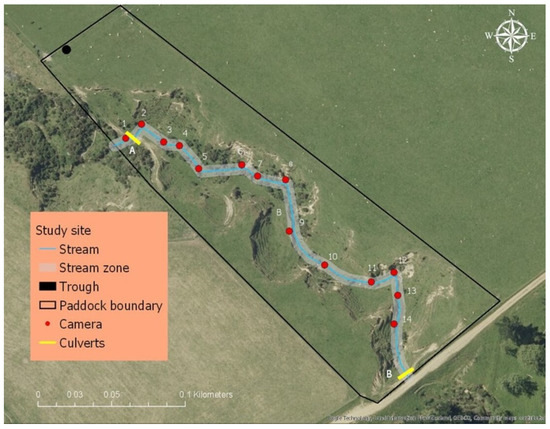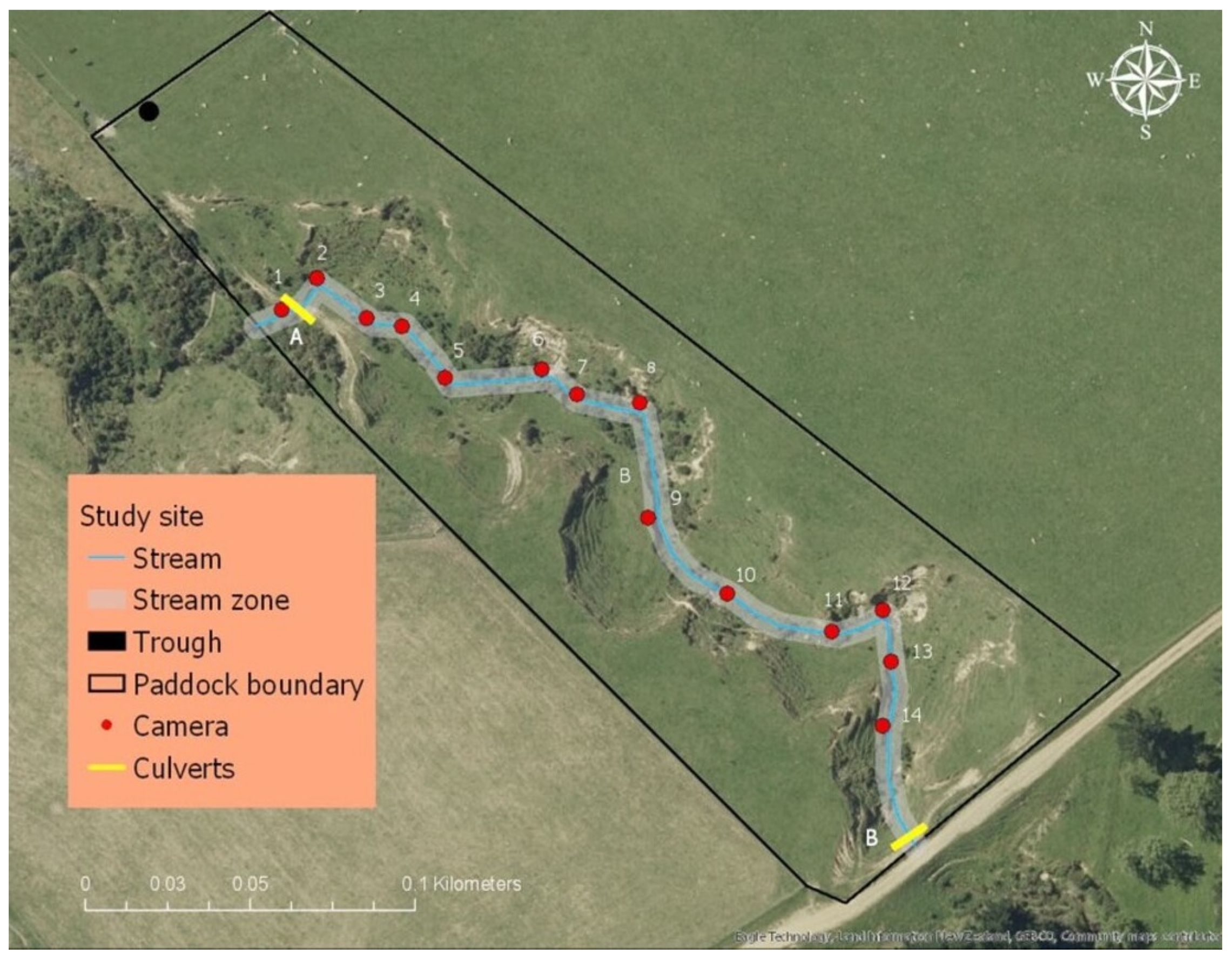Contents
- I. Introduction
- II. Understanding Breed-Specific Legislation
- III. Arguments in Support of Breed-Specific Legislation
- IV. Criticisms and Challenges to Breed-Specific Legislation
- V. Legal and Ethical Considerations of Breed-Specific Legislation
- VI. Alternatives to Breed-Specific Legislation
- VII. Impact of Breed-Specific Legislation on Dog Breeds and Ownership
- VIII. The Role of Media in Shaping Perceptions of Breed-Specific Legislation
- X. International Perspectives on Breed-Specific Legislation
I. Introduction

Breed-specific legislation (BSL) has been a topic of much debate and controversy in recent years. This legislation aims to regulate or ban certain dog breeds based on their perceived danger or aggression. While the intention behind BSL is to protect public safety, it has faced criticism for being ineffective and discriminatory.
BSL typically targets breeds such as Pit Bulls, Rottweilers, and German Shepherds, labeling them as inherently dangerous. However, many experts argue that a dog’s behavior is influenced by various factors, including training, socialization, and individual temperament, rather than solely by its breed.
Proponents of BSL argue that it helps prevent dog attacks and reduces the risk to public safety. They believe that by restricting or banning certain breeds, the number of incidents involving aggressive dogs will decrease. However, opponents argue that BSL unfairly targets responsible dog owners and punishes innocent animals based on their appearance rather than their behavior.
Furthermore, studies have shown that BSL has not been effective in reducing dog bite incidents. In fact, areas with BSL often see an increase in attacks by other breeds not covered by the legislation. This suggests that focusing on responsible ownership, education, and enforcement of existing laws may be more effective in preventing dog-related incidents.
It is important to consider the impact of BSL on responsible dog owners and the potential for breed discrimination. Many well-behaved dogs of targeted breeds are unfairly stigmatized, leading to difficulties in finding housing, obtaining insurance, and even walking their dogs in public.
As the debate surrounding BSL continues, it is crucial to examine the evidence, consider alternative approaches to dog bite prevention, and prioritize responsible ownership and education over breed-specific regulations. By doing so, we can work towards a safer and more inclusive community for both humans and animals.
II. Understanding Breed-Specific Legislation

Breed-Specific Legislation (BSL) is a topic that has sparked much controversy and debate in recent years. As a dog lover and advocate, I have personally witnessed the impact that BSL can have on both dogs and their owners. In this section, we will delve into the history and development of BSL, as well as the different types of regulations that fall under this category.
A. History and development of BSL
The origins of BSL can be traced back to the early 20th century when certain dog breeds were targeted due to their perceived aggression. The first recorded instance of BSL can be found in the United Kingdom, where the Dangerous Dogs Act of 1991 was enacted in response to a series of high-profile dog attacks.
Since then, many countries and municipalities around the world have implemented their own versions of BSL. The intentions behind these regulations are often well-meaning, with the aim of protecting public safety. However, the effectiveness of BSL in achieving this goal has been a subject of much debate.
Proponents of BSL argue that certain dog breeds are inherently dangerous and pose a higher risk to public safety. They believe that by restricting or banning these breeds, the number of dog attacks will decrease. On the other hand, opponents of BSL argue that it is an ineffective and discriminatory approach that unfairly targets specific breeds.
It is important to note that BSL does not take into account individual dog behavior or temperament. Instead, it focuses on the breed or physical characteristics of a dog. This approach fails to recognize that a dog’s behavior is influenced by a multitude of factors, including training, socialization, and owner responsibility.
B. Types of BSL regulations
There are several types of BSL regulations that can be implemented, each with its own set of restrictions and requirements. These regulations can vary significantly from one jurisdiction to another. Here are three common types of BSL regulations:
- Breed-specific bans: This type of regulation completely prohibits the ownership or presence of certain dog breeds within a jurisdiction. Breeds that are commonly targeted by breed-specific bans include Pit Bulls, Rottweilers, and Doberman Pinschers. These bans often require existing owners to surrender their dogs or relocate them to areas where the breed is not banned.
- Breed-specific restrictions: Unlike breed-specific bans, breed-specific restrictions allow the ownership of certain breeds but impose additional requirements and limitations. These can include mandatory muzzling in public, higher licensing fees, and stricter leash laws. The goal of these restrictions is to mitigate the perceived risks associated with certain breeds.
- Mandatory spaying/neutering: Some jurisdictions have implemented regulations that require certain breeds or types of dogs to be spayed or neutered. The rationale behind this requirement is to control the population of potentially dangerous dogs and reduce the likelihood of aggressive behavior.
It is worth noting that the effectiveness of these regulations in reducing dog attacks and promoting public safety is highly debated. Studies have shown that BSL has not been successful in significantly reducing the number of dog bites or attacks. Instead, it has led to the euthanasia of countless innocent dogs and the displacement of responsible owners.
Furthermore, BSL fails to address the root causes of dog aggression, such as irresponsible ownership, lack of proper training, and inadequate socialization. Instead of focusing on breed-specific regulations, efforts should be directed towards promoting responsible dog ownership, education, and community-based initiatives.
III. Arguments in Support of Breed-Specific Legislation

Breed-specific legislation (BSL) has been a topic of much debate and controversy in recent years. While some argue that it is an effective way to improve public safety and reduce dog-related incidents, others believe that it unfairly targets certain breeds and fails to address the root causes of these issues. In this section, we will explore the arguments in support of BSL, including public safety concerns, reduction of dog-related incidents, and case studies and statistics supporting its implementation.
A. Public safety concerns
One of the main arguments in favor of breed-specific legislation is the concern for public safety. Proponents argue that certain breeds, such as pit bulls or Rottweilers, are inherently more dangerous and pose a higher risk to the community. They believe that by implementing BSL, which typically includes breed-specific bans or restrictions, the number of dog attacks and injuries can be reduced.
Advocates of BSL often point to high-profile cases of dog attacks involving specific breeds as evidence of the need for stricter regulations. They argue that these breeds have a higher tendency for aggression and are more likely to cause severe injuries or fatalities. By targeting these breeds through BSL, they believe that the overall safety of the public can be improved.
However, critics of BSL argue that focusing solely on breed is an oversimplification of the issue. They argue that a dog’s behavior is influenced by a variety of factors, including its individual temperament, training, and socialization. They believe that responsible pet ownership and education about dog behavior and safety would be more effective in preventing dog-related incidents than breed-specific regulations.
Another argument in support of breed-specific legislation is the belief that it can lead to a reduction in dog-related incidents. Proponents argue that by targeting breeds that are perceived as more dangerous, the likelihood of these incidents occurring can be minimized.
They argue that by restricting or banning certain breeds, the number of dogs with a higher potential for aggression or harm will decrease. This, in turn, can lead to a decrease in dog bites, attacks, and other related incidents. They believe that by implementing BSL, communities can create a safer environment for both humans and animals.
However, opponents of BSL argue that focusing on breed alone does not address the underlying factors that contribute to dog-related incidents. They argue that responsible pet ownership, proper training, and socialization are key factors in preventing such incidents. They believe that a more comprehensive approach, which includes education and support for dog owners, would be more effective in reducing dog-related incidents.
C. Case studies and statistics supporting BSL
Proponents of breed-specific legislation often cite case studies and statistics to support their arguments. They point to instances where breed-specific regulations have been implemented and claim that they have resulted in a decrease in dog-related incidents.
For example, they may reference cities or countries that have enacted breed-specific bans and claim that these measures have led to a reduction in dog attacks or injuries. They may also cite studies that show a correlation between certain breeds and a higher risk of aggression or harm.
However, critics of BSL argue that these case studies and statistics may not provide a complete picture. They argue that other factors, such as changes in responsible pet ownership practices or increased education and awareness about dog behavior, may have contributed to the observed decrease in incidents. They believe that a more comprehensive analysis is needed to accurately assess the effectiveness of breed-specific legislation.
IV. Criticisms and Challenges to Breed-Specific Legislation

Breed-specific legislation (BSL) has long been a topic of debate and controversy in the realm of dog ownership and public safety. While proponents argue that such legislation is necessary to protect communities from dangerous dog breeds, critics raise valid concerns about the lack of evidence-based support, the ineffectiveness of BSL in reducing dog-related incidents, and the discrimination it imposes on certain breeds and responsible owners.
A. Lack of evidence-based support
One of the primary criticisms of breed-specific legislation is the lack of evidence-based support for its effectiveness. Many studies have shown that breed alone is not a reliable predictor of a dog’s behavior or propensity for aggression. Dog behavior is influenced by a variety of factors, including genetics, upbringing, socialization, and individual temperament.
Furthermore, the American Veterinary Medical Association (AVMA) has stated that breed-specific legislation is not a scientifically valid or reliable method for identifying dangerous dogs. The AVMA emphasizes the importance of focusing on individual dog behavior and responsible ownership practices rather than targeting specific breeds.
Instead of relying on breed-specific legislation, experts argue for the implementation of comprehensive, evidence-based approaches to dog bite prevention. These approaches should include education and awareness programs, responsible ownership requirements, and enforcement of existing laws pertaining to dog behavior and control.
Despite the intention behind breed-specific legislation, there is a significant body of evidence suggesting that it is ineffective in reducing dog-related incidents. Studies have shown that breed-specific legislation does not lead to a significant decrease in dog bites or attacks. In fact, some jurisdictions that have implemented BSL have experienced an increase in dog-related incidents.
This ineffectiveness can be attributed to several factors. Firstly, breed-specific legislation fails to address the root causes of dog aggression, such as irresponsible ownership, lack of socialization, and inadequate training. By focusing solely on breed, BSL overlooks the individual dog’s behavior and the owner’s responsibility in preventing incidents.
Secondly, breed-specific legislation often leads to a false sense of security. When certain breeds are targeted, owners of those breeds may be more likely to neglect responsible ownership practices, assuming that their dog is inherently safe. This can result in a higher risk of incidents occurring.
Lastly, breed-specific legislation can have unintended consequences, such as the displacement of targeted breeds into neighboring jurisdictions or the abandonment of dogs due to breed restrictions. These consequences can further strain animal shelters and increase the burden on already overwhelmed rescue organizations.
C. Discrimination against certain breeds and responsible owners
Perhaps one of the most significant criticisms of breed-specific legislation is the discrimination it imposes on certain breeds and responsible owners. BSL often targets breeds that are perceived as being more aggressive or dangerous, such as Pit Bulls or Rottweilers. However, this generalization unfairly stigmatizes all dogs of these breeds, regardless of their individual temperament or behavior.
Responsible owners of targeted breeds are often subjected to additional restrictions and requirements, such as mandatory muzzling, higher insurance premiums, or even forced relocation. These measures not only infringe upon the rights of responsible owners but also perpetuate stereotypes and prejudices against certain breeds.
Furthermore, breed-specific legislation fails to address the underlying issue of irresponsible ownership. Irresponsible owners who neglect proper training, socialization, and care for their dogs can be found among all breeds. By focusing solely on breed, BSL overlooks the importance of responsible ownership practices and penalizes responsible owners of targeted breeds.
V. Legal and Ethical Considerations of Breed-Specific Legislation

As a content writer with a deep understanding of breed-specific legislation (BSL), I am well-versed in the legal and ethical considerations surrounding this controversial topic. In this section, we will explore the constitutional issues and challenges faced by BSL, as well as the ethical implications of targeting specific breeds.
A. Constitutional issues and challenges to BSL
When it comes to breed-specific legislation, one of the key concerns is its constitutionality. Many argue that BSL infringes upon the rights of dog owners and violates the principles of equal protection under the law. By targeting specific breeds, BSL assumes that all dogs of a certain breed are inherently dangerous, without considering individual temperament or behavior.
Opponents of BSL argue that it is a form of discrimination, as it unfairly targets certain breeds based on stereotypes and media sensationalism. They argue that responsible dog ownership and education are more effective in preventing dog-related incidents than breed-specific regulations.
Furthermore, BSL has faced legal challenges in various jurisdictions. Courts have questioned the scientific validity of breed identification methods and the effectiveness of breed-specific regulations in reducing dog bites and attacks. In some cases, BSL has been deemed unconstitutional and struck down.
It is important to note that while BSL may be implemented with the intention of promoting public safety, its effectiveness and constitutionality remain subjects of debate and scrutiny.
B. Ethical implications of targeting specific breeds
From an ethical standpoint, targeting specific breeds raises concerns about fairness and the well-being of dogs and their owners. BSL assumes that certain breeds are inherently dangerous, which can lead to stigmatization and discrimination against responsible dog owners.
By focusing solely on breed, BSL fails to address the root causes of dog-related incidents, such as irresponsible ownership, lack of socialization, and inadequate training. It overlooks the fact that any dog, regardless of breed, has the potential to exhibit aggressive behavior if not properly cared for and trained.
Furthermore, breed-specific regulations can result in the euthanasia of innocent dogs based solely on their breed or physical appearance. This practice is highly controversial and raises ethical concerns about the fairness and humaneness of such policies.
Instead of targeting specific breeds, many experts advocate for a more comprehensive approach to dog bite prevention. This includes promoting responsible dog ownership, implementing effective dog bite laws that focus on individual behavior, and investing in education and awareness programs.
VI. Alternatives to Breed-Specific Legislation
VI. Alternatives to Breed-Specific Legislation
A. Responsible dog ownership education and training programs
Responsible dog ownership education and training programs are a vital alternative to breed-specific legislation (BSL). These programs focus on educating dog owners about responsible pet ownership, including proper training, socialization, and care for their dogs. By providing dog owners with the knowledge and skills to raise well-behaved and well-adjusted dogs, these programs can help prevent dog-related incidents and promote safer communities.
One key aspect of responsible dog ownership education is teaching owners about the importance of socializing their dogs from a young age. Socialization helps dogs become comfortable and confident in various situations and environments, reducing the likelihood of aggressive behavior. Training programs can also teach owners how to effectively communicate with their dogs, using positive reinforcement techniques to encourage desired behaviors.
In addition to training, responsible dog ownership education programs often cover topics such as proper nutrition, regular veterinary care, and the importance of providing a safe and stimulating environment for dogs. By addressing these aspects of pet care, these programs aim to create a well-rounded and responsible dog owner who can provide a loving and nurturing home for their canine companion.
B. Community-based approaches to dog safety
Community-based approaches to dog safety are another effective alternative to breed-specific legislation. These approaches focus on fostering a sense of community responsibility for dog safety, encouraging collaboration between dog owners, neighbors, and local authorities.
One example of a community-based approach is the establishment of neighborhood watch programs specifically designed to address dog-related issues. These programs bring together residents who are passionate about dog safety and work together to identify potential risks, educate the community, and promote responsible dog ownership. By actively involving the community in dog safety initiatives, these programs can help create a safer environment for both dogs and humans.
Another community-based approach is the implementation of dog-friendly parks and public spaces. These areas provide designated spaces for dogs to exercise, play, and socialize under the supervision of their owners. By providing safe and controlled environments for dogs, these spaces can help prevent incidents and promote responsible dog ownership.
C. Breed-neutral legislation and regulations
Breed-neutral legislation and regulations are an alternative approach to breed-specific legislation that focuses on the behavior and actions of individual dogs rather than their breed. This approach recognizes that a dog’s behavior is influenced by various factors, including its upbringing, training, and environment, rather than solely by its breed.
Breed-neutral legislation typically includes measures such as mandatory spaying and neutering, leash laws, and penalties for irresponsible dog owners. These regulations aim to promote responsible dog ownership and hold owners accountable for the actions of their dogs, regardless of their breed.
By focusing on the behavior and actions of individual dogs, breed-neutral legislation and regulations can effectively address dog-related issues without unfairly targeting specific breeds. This approach encourages responsible ownership and emphasizes the importance of training and socialization for all dogs, regardless of their breed or appearance.
In conclusion, responsible dog ownership education and training programs, community-based approaches to dog safety, and breed-neutral legislation and regulations are viable alternatives to breed-specific legislation. These alternatives prioritize education, collaboration, and individual responsibility, promoting safer communities and fostering positive relationships between dogs and humans. By implementing these alternatives, we can create a more inclusive and effective approach to dog safety that benefits all breeds and their owners.
VII. Impact of Breed-Specific Legislation on Dog Breeds and Ownership
Breed-specific legislation (BSL) refers to laws and regulations that target specific dog breeds or types, imposing restrictions or outright bans on their ownership. The intention behind BSL is to reduce dog-related incidents and promote public safety. However, the impact of such legislation on dog breeds and ownership is a topic of much debate and controversy.
A. Changes in breed popularity and availability
One of the significant impacts of breed-specific legislation is the changes it brings to the popularity and availability of targeted breeds. When a breed is singled out by BSL, it often faces negative public perception and stigma. This can lead to a decline in the popularity of the breed as potential owners may be deterred from owning a dog that is associated with aggression or danger.
Additionally, BSL may result in limited availability of targeted breeds. Some jurisdictions impose restrictions on breeding or importing targeted breeds, making it challenging for responsible breeders to continue their breeding programs. This limited availability can further contribute to the decline in breed population and genetic diversity.
B. Impact on responsible dog breeders and enthusiasts
Responsible dog breeders and enthusiasts are greatly affected by breed-specific legislation. These individuals are dedicated to preserving and improving the breed through responsible breeding practices. However, BSL can hinder their efforts and pose significant challenges.
Firstly, BSL may require breeders to obtain special permits or licenses to continue breeding targeted breeds. These additional requirements can be burdensome and costly, making it harder for breeders to continue their work. Moreover, BSL may impose strict regulations on breeding practices, such as mandatory spaying or neutering, which can limit the breeding options and potential of targeted breeds.
Furthermore, responsible dog breeders and enthusiasts may face social and economic consequences due to the negative perception associated with targeted breeds. They may find it harder to sell puppies or find suitable homes for their dogs, leading to financial strain and difficulties in sustaining their breeding programs.
C. Challenges faced by owners of targeted breeds
Owners of targeted breeds also bear the brunt of breed-specific legislation. They often face a range of challenges and restrictions that can impact their ability to enjoy dog ownership fully.
One of the primary challenges is the increased scrutiny and regulation imposed on owners of targeted breeds. Some jurisdictions require owners to obtain special licenses, undergo mandatory training, or carry additional liability insurance. These requirements can be time-consuming, expensive, and burdensome for owners.
Additionally, BSL may impose restrictions on where targeted breeds can be kept or walked. Some areas may have breed-specific bans, prohibiting owners from residing in certain neighborhoods or accessing public spaces. This can limit the freedom and mobility of owners and their dogs, making it harder to provide proper exercise and socialization.
Moreover, owners of targeted breeds may face discrimination and prejudice from the community. They may be subjected to unwarranted scrutiny, negative stereotypes, and even harassment. This can have a significant emotional and psychological impact on both the owners and their dogs.
VIII. The Role of Media in Shaping Perceptions of Breed-Specific Legislation
In today’s digital age, the media plays a significant role in shaping public opinion and policy decisions. When it comes to breed-specific legislation (BSL), the media’s portrayal of specific dog breeds has a profound impact on how people perceive these breeds and the need for legislation targeting them. This article delves into the influence of media on public opinion and policy decisions regarding BSL.
Media portrayal of specific dog breeds
The media often portrays certain dog breeds in a negative light, perpetuating stereotypes and stigmatizing them. Breeds such as Pit Bulls, Rottweilers, and Doberman Pinschers are frequently depicted as aggressive, dangerous, and prone to violence. These portrayals create a biased perception of these breeds among the general public.
News stories and sensationalized headlines tend to focus on incidents involving these breeds, highlighting cases of attacks or aggression. While it is essential to report on such incidents, the media’s disproportionate coverage can create a skewed perception of the overall behavior and temperament of these breeds.
Moreover, the media’s portrayal of specific dog breeds often lacks context. It fails to consider factors such as individual temperament, socialization, and responsible ownership. By focusing solely on breed, the media overlooks the crucial role that human factors play in a dog’s behavior.
Influence of media on public opinion and policy decisions
The media’s portrayal of specific dog breeds directly influences public opinion on BSL. When the media consistently portrays certain breeds as dangerous or aggressive, it instills fear and bias in the minds of the public. This fear can lead to demands for stricter legislation targeting these breeds.
Politicians and policymakers are not immune to the influence of media. They are often swayed by public opinion and media narratives when making decisions regarding BSL. The media’s sensationalized coverage can create a sense of urgency to act, leading to the implementation of breed-specific laws.
However, it is essential to recognize that BSL is a controversial topic, and its effectiveness in reducing dog-related incidents is widely debated. Many experts argue that BSL is ineffective and unfair, as it penalizes responsible dog owners and well-behaved dogs based solely on their breed.
By perpetuating stereotypes and stigmatizing specific dog breeds, the media contributes to the ongoing controversy surrounding BSL. It is crucial for the media to present a balanced and nuanced perspective, considering both the risks and benefits of breed-specific legislation.
As a society, we must strive for responsible reporting and avoid sensationalism when it comes to dog-related incidents. It is essential to focus on educating the public about responsible dog ownership, proper socialization, and the importance of individual temperament rather than demonizing specific breeds.
X. International Perspectives on Breed-Specific Legislation
In this section, we will explore the different perspectives on breed-specific legislation (BSL) in various countries around the world. BSL refers to laws and regulations that target specific dog breeds, often labeling them as dangerous or aggressive. These laws aim to reduce dog attacks and promote public safety, but they have sparked controversy and debate among experts, dog owners, and animal rights advocates.
A. Comparison of BSL regulations in different countries
When it comes to BSL, countries have taken different approaches based on their unique circumstances and experiences. Let’s take a closer look at some notable examples:
- United States: BSL is implemented at the state and local levels, with some cities and municipalities enacting breed-specific restrictions or outright bans. Pit bulls are the most commonly targeted breed, with restrictions ranging from mandatory spaying/neutering to outright bans.
- United Kingdom: The UK introduced the Dangerous Dogs Act in 1991, which banned four breeds – Pit Bull Terriers, Japanese Tosas, Dogo Argentinos, and Fila Brasileiros. The law also imposes strict regulations on ownership, including mandatory microchipping, insurance, and muzzling in public.
- Canada: BSL is not implemented at the federal level in Canada, but some provinces and municipalities have enacted breed-specific regulations. For example, Ontario has a ban on pit bulls, while other provinces have restrictions or bylaws targeting specific breeds.
- Australia: BSL is not widespread in Australia, but some local councils have implemented breed-specific restrictions. The focus is primarily on pit bulls and other perceived dangerous breeds, with requirements such as muzzling, leashing, and higher registration fees.
- Germany: Germany has a breed-specific legislation known as the “Hundeverordnung” (Dog Regulation). It categorizes dogs into different levels of danger based on their breed and size. Owners of dogs classified as dangerous must meet specific requirements, such as obtaining a license, passing a behavior test, and having liability insurance.
These examples highlight the diverse approaches countries have taken towards BSL. While some nations have implemented strict regulations and bans, others have opted for alternative measures such as responsible ownership education and community-based initiatives.
B. Case study: Breed-specific legislation in the United Kingdom
The United Kingdom’s experience with breed-specific legislation provides valuable insights into the effectiveness and challenges associated with such laws. The Dangerous Dogs Act, introduced in response to a series of high-profile dog attacks, aimed to improve public safety and reduce dog-related incidents.
However, the effectiveness of the legislation has been a subject of debate. Critics argue that BSL unfairly targets specific breeds, leading to the stigmatization and potential euthanasia of innocent dogs. They argue that a dog’s behavior is influenced by various factors, including socialization, training, and individual temperament, rather than solely by breed.
Proponents of BSL argue that certain breeds, such as pit bulls, have a higher propensity for aggression and pose a greater risk to public safety. They believe that breed-specific regulations are necessary to prevent dog attacks and protect communities.
Despite the intentions behind BSL, studies have shown mixed results regarding its effectiveness. Some research suggests that BSL has not significantly reduced dog bite incidents, while others indicate a decrease in certain areas. The complex nature of dog-related incidents makes it challenging to attribute changes solely to breed-specific legislation.
Moreover, BSL has unintended consequences, such as the displacement of targeted breeds to neighboring areas without such regulations. This can lead to a rise in unregulated breeding and ownership, potentially exacerbating the issues BSL aims to address.
It is important to note that BSL should not be seen as a standalone solution to dog-related incidents. A comprehensive approach that includes responsible ownership education, early intervention, and community-based initiatives is crucial for promoting public safety and reducing dog attacks.
